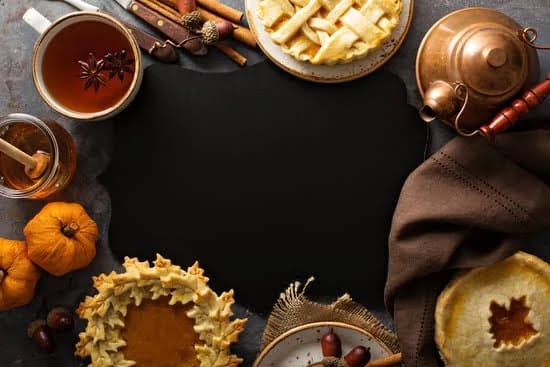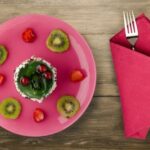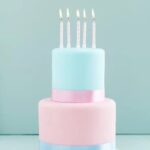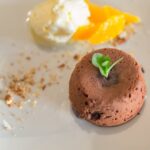Decorating a quilt cake adds a touch of charm and elegance to any special occasion. The popularity of quilt cake designs has soared in recent years, as people appreciate the intricate patterns and textured look they provide. Whether it’s for a birthday, wedding, or anniversary celebration, a quilt cake is the perfect choice to impress your guests and add a unique centerpiece to your event.
Quilt cakes have gained recognition not only for their visual appeal but also for the symbolism behind them. Just like quilts made from fabric, these cakes represent warmth, comfort, and love. They are often associated with family traditions, memories, and the cozy feeling of being wrapped in a quilt. By choosing to decorate a quilt cake, you are not only creating a beautiful dessert but also paying homage to the artistry of quilting.
The versatility of quilt cake designs makes them suitable for various themes and occasions. From simple geometric patterns to intricate floral motifs, there is a quilt design that can perfectly match your event’s style or reflect the personality of the recipient.
Whether you’re celebrating a milestone birthday or honoring a couple’s wedding anniversary, decorating a quilt cake allows you to tailor its appearance according to your desired theme or color scheme. So let your creativity soar as you embark on this delightful journey of decorating your very own quilt cake masterpiece.
Gathering the Necessary Supplies and Ingredients
To successfully decorate a quilt cake, you will need to gather the necessary supplies and ingredients. Here is a list of essential tools that will make your decorating process easier:
- Cake Stand: A sturdy cake stand is crucial for displaying and working on your quilt cake. It provides stability and allows for easy rotation while decorating.
- Fondant Smoother: This tool is used to smooth out the fondant on the cake’s surface, creating a clean and polished look.
- Quilting Mat: A quilting mat is an excellent investment when creating a quilted pattern on your cake. It helps achieve precise lines and spacing between the quilted patches.
- Rolling Pin: A good rolling pin is needed to roll out a thin, even layer of fondant for covering the cake.
- Offset Spatula: An offset spatula is handy for spreading buttercream frosting smoothly onto the cake layers.
- Piping Bags and Tips: These are essential if you plan to add decorative details using buttercream frosting, such as piped borders or intricate designs.
Now let’s move on to the ingredients required:
- Cake Layers: Decide on your favorite flavor(s) and prepare enough cake layers based on your desired size and shape of the quilt cake.
- Buttercream Frosting: Homemade buttercream frosting adds a delicious taste to your quilt cake while providing a sturdy base for attaching fondant and other decorations.
- Fondant: Fondant is used to cover the quilt cake’s surface, giving it a sleek appearance like that of fabric. You can purchase pre-made fondant or make it from scratch using marshmallows or powdered sugar.
With these supplies and ingredients in hand, you’re one step closer to creating an awe-inspiring quilt cake. The next section will guide you in planning the design and color scheme that will truly bring your quilt cake to life.
Planning the Design and Color Scheme
When it comes to decorating a quilt cake, one of the most important aspects is planning the design and color scheme. This step sets the foundation for the overall look and feel of the cake and allows you to create a visually stunning masterpiece that complements the occasion or theme.
Choosing a Quilt Pattern
Before diving into designing your quilt cake, take some time to explore different quilt patterns that resonate with your desired aesthetic. Traditional patterns like Log Cabin, Nine Patch, or Pinwheel can add a classic touch to your cake, while modern patterns like Chevron or Geometric shapes can bring a contemporary twist. Consider the complexity of the pattern and choose one that you feel confident in replicating on your cake.
Creating a Sketch
Once you have chosen your quilt pattern, it’s helpful to sketch it out on paper before starting on the cake itself. This allows you to visualize how the pattern will look on a larger scale and make any necessary adjustments. Use colored pencils or markers to indicate which colors you plan to use in each section of the quilt pattern. Having a clear plan will make it easier when you start applying fondant and frosting onto the cake.
Selecting Colors
The color scheme of your quilt cake should be coordinated with the occasion or theme of the event. Consider using colors that match a specific color palette or incorporate shades that evoke certain emotions. For example, pastel hues may be fitting for a baby shower, while rich jewel tones can enhance an autumn-themed celebration. Don’t be afraid to experiment with different combinations until you find one that is visually appealing.
Incorporating Texture
In addition to selecting colors, incorporating texture into your design can add depth and interest to your quilt cake. You can create texture by using different techniques such as painting edible food coloring onto fondant pieces or using an embossing tool to create raised patterns on fondant patches. These textural elements will help bring your quilt cake to life and make it visually captivating.
By carefully planning the design and color scheme of your quilt cake, you can ensure that every element comes together harmoniously. Take the time to explore different quilt patterns, create a sketch of your design, select an appropriate color scheme, and consider adding texture to elevate the visual impact of your masterpiece.
Preparing the Cake Layers and Frosting
Before you can begin decorating your quilt cake, you’ll need to start with a solid foundation – the cake layers and frosting. Here are the steps to ensure your cake turns out moist and delicious:
- Bake and Cool the Cake Layers: Start by preheating your oven to the recommended temperature stated in your cake recipe. Grease and flour your cake pans or line them with parchment paper to prevent sticking. Prepare the cake batter according to the recipe instructions, making sure to evenly divide it among the pans.
Bake the cakes until a toothpick inserted into the center comes out clean. Once done, let them cool in the pans for about 10 minutes before transferring them onto a wire rack to cool completely. - 1 cup (2 sticks) unsalted butter, softened.
- 4 cups powdered sugar.
- 1/4 cup whole milk or heavy cream.
- 2 teaspoons vanilla extract.
- Achieving the Desired Consistency: Depending on how you plan to decorate your quilt cake, you may need different consistencies of buttercream frosting. For smoother surfaces like covering the entire cake with fondant or achieving sharp edges on buttercream decorations, a stiffer consistency is necessary. To achieve this, add additional powdered sugar until the desired consistency is reached. If you need a softer consistency for piping delicate details, add a small amount of milk or cream.
2. Buttercream Frosting Recipe: While your cake layers are cooling, prepare a batch of buttercream frosting that will give your quilt cake a smooth finish and complement its flavors. Here’s a simple recipe for buttercream frosting:
– Ingredients:
– Instructions:
i. In a large bowl, beat the softened butter using an electric mixer until creamy.
ii. Gradually add powdered sugar, about one cup at a time, beating well after each addition.
iii. Pour in milk or heavy cream and vanilla extract, then continue beating until light and fluffy.
iv. If needed, adjust the consistency by adding more powdered sugar or milk/cream.
Once you have your cake layers baked and cooled, and your buttercream frosting prepared, you’re ready to move on to the next step in creating your quilt cake masterpiece.
Applying the Fondant Base
After gathering all the necessary supplies and ingredients, it’s time to move on to applying the fondant base to your quilt cake. This step is crucial as it provides a smooth surface for the quilting design and sets the foundation for your cake decoration. Here are some steps and techniques to help you achieve a flawless fondant base.
To begin, make sure that your cake layers are completely cooled. It is best to level off any domed tops before moving forward. Once your cake is ready, you can start preparing the fondant. Dust your workspace with powdered sugar or cornstarch to prevent sticking. Take a portion of fondant and knead it until it becomes pliable and smooth.
Next, roll out the fondant using a rolling pin. Aim for a thickness of about 1/8 inch or as desired. Begin at the center of the fondant and work your way outwards in all directions, rotating occasionally to maintain an even shape. The rolled fondant should be slightly larger than the cake itself.
To transfer the rolled fondant onto the cake, carefully lift it using both hands or by draping it over a rolling pin for support. Gently drape the rolled fondant over the top of the cake, ensuring that it covers the entire surface without any air bubbles or wrinkles. Smooth down the sides of the cake and trim away any excess fondant using a sharp knife or pizza cutter.
To achieve a flawlessly smooth finish on your quilt cake, use a fondant smoother or gently press down with clean, dry hands starting from the top center and working your way downwards towards the sides. Pay attention to any creases or pleats that may form during this process and gently smooth them out.
Once you have smoothed out all areas, take extra care around corners and edges to avoid tearing or bulging in those areas while smoothing down with your hands or using a fondant smoother. Remember, practice makes perfect, so don’t be discouraged if it takes a couple of tries to achieve the desired result.
By following these steps, you will have successfully applied the fondant base to your quilt cake. This sets the stage for the beautiful quilted pattern that will be showcased on top. With the foundation in place, it’s time to move on to the next step – creating the quilted pattern using various techniques and tools.
Quilting Techniques
Creating a quilted pattern on your cake is the key to achieving that authentic quilt cake look. There are different techniques you can use to achieve this effect, depending on your preferences and available tools. In this section, we will explore some popular quilting techniques and provide step-by-step instructions for creating the quilted pattern on your cake’s surface.
Using a Quilting Mat
One of the easiest ways to create a quilted pattern is by using a quilting mat. These mats have patterns embossed onto them, allowing you to easily transfer the design onto your fondant-covered cake. To begin, roll out your fondant into a large, even sheet and carefully drape it over your cake. Gently press down on the fondant with your hands or a fondant smoother until it adheres smoothly to the cake.
Next, place the quilting mat gently over the fondant-covered cake, aligning the design with the area you want to quilt. Use gentle but firm pressure to emboss the design onto the fondant, making sure not to press too hard and tear through the fondant layer. Once you’ve completed one section of the pattern, gently lift off the quilting mat and reposition it for other sections until you’ve covered your desired area.
Embossing Tools and Rulers
If you don’t have access to a quilting mat, don’t worry. You can still achieve a quilted look by using embossing tools or rulers. Start by rolling out your fondant as before and covering your cake smoothly. Then, using an embossing tool or even just a ruler edge, carefully mark lines onto the fondant in a grid-like or diagonal pattern.
To create depth and texture in each quilted square or diamond shape, use an embosser or the back of a paintbrush to lightly press and indent each corner where the lines intersect. Take your time with this step to ensure clean and precise markings. Repeat the process until you’ve covered your desired area with the quilted pattern.
Remember, practice makes perfect when it comes to quilting techniques on a cake. Don’t be discouraged if your first attempt isn’t flawless – embrace imperfections as part of the charm of a homemade quilt cake. With time and patience, you’ll master the art of creating beautiful quilted patterns that will amaze your family and friends.
In the next section, we will explore ways to further enhance your quilt cake’s appearance through the addition of decorative elements.
Adding Decorative Elements
Once you have created the quilted pattern on your cake, it’s time to add some decorative elements to enhance its overall appearance. These additions can truly make your quilt cake stand out and add a touch of elegance or whimsy, depending on your theme or occasion. Here are some suggestions for adding decorative elements to your quilt cake:
- Edible Lace: Edible lace is a delicate and beautiful addition to any quilt cake design. You can find pre-made edible lace in various designs and colors, or you can create your own using lace molds and edible lace mix. Simply place the lace on the cake where desired and gently press it into the fondant.
- Edible Pearls: Edible pearls are an excellent choice for adding a touch of sophistication to your quilt cake. They come in different sizes and colors, allowing you to customize the look of your cake. You can apply them individually or create a string of pearls around the edges of each quilt square.
- Sugar Flowers: Sugar flowers are a classic choice for adding elegance to any cake design, including quilt cakes. You can purchase pre-made sugar flowers or create your own using gum paste or fondant. Arrange the flowers strategically on the surface of the quilted pattern for a stunning effect.
When attaching these decorative elements to your quilt cake, it’s important to do so securely to prevent them from falling off during transportation or while being displayed. Here are some tips for attaching decorative elements:
- For lightweight elements like edible lace or edible pearls, simply use a small dab of water as adhesive.
- For heavier elements like sugar flowers, use royal icing as an adhesive since it provides more stability.
- If necessary, use toothpicks or skewers inserted into the cake layers beneath the fondant as additional support for larger decorations.
By adding these decorative elements, you can elevate your quilt cake from beautiful to breathtaking. Be sure to consider your overall design and theme when choosing which elements to include, and don’t be afraid to get creative. Remember, the goal is to make your quilt cake a true masterpiece that will delight both the eyes and taste buds of everyone who sees it.
| Decorative Elements | Description |
|---|---|
| Edible Lace | A delicate and beautiful addition that can be pre-made or created using molds and edible lace mix. |
| Edible Pearls | Sophisticated option for adding a touch of elegance to the quilt cake; available in different sizes and colors. |
| Sugar Flowers | Classic choice for an elegant look; can be purchased or made using gum paste or fondant. |
Finishing Touches and Cleanup
Once the quilt cake is complete, it’s time to add the finishing touches and ensure everything is clean and polished. This section will provide guidance on achieving clean edges, storing the cake, and cleaning up after the decorating process.
To achieve clean edges on the quilt cake, start by trimming any excess fondant around the base of the cake using a sharp knife or fondant trimmer. Take your time and make precise cuts to maintain a neat appearance. If desired, you can also add a decorative border using piped buttercream or additional fondant details.
After completing the quilt cake, it’s important to store it properly to ensure freshness. If possible, keep the finished cake in a cool room or refrigerator until serving time. However, be cautious about refrigeration if you have used certain decorative elements such as edible lace or sugar flowers that may become compromised by moisture. Consider consulting with a professional baker for specific storage recommendations based on your design.
Cleaning up after decorating a quilt cake can be a messy task, but with some tips and tricks, it can be simplified. Start by immediately washing all your tools and utensils to prevent any dried-on icing or fondant becoming difficult to remove later on.
For removing excess icing from your piping bags or tips, use warm water and dish soap. It’s also essential to wipe down your work surface thoroughly and dispose of any leftover fondant scraps or icing in an organized manner.
It’s important to remember that creating a quilt cake is not only about producing something visually stunning; it’s also about enjoying the process itself. Have fun while expressing your creativity through this unique form of cake decorating. With practice and experimentation, you will hone your skills and develop your own techniques for perfecting quilt cakes that are truly works of art.
| Heading | Heading |
|---|---|
| Clean Edges | After completing the quilt cake, trim excess fondant and add a decorative border if desired. |
| Storage | Keep the finished cake in a cool room or refrigerator, but be cautious with certain decorative elements that may be affected by moisture. |
| Cleanup | Wash tools and utensils immediately, wipe down work surface thoroughly, and dispose of leftover icing and fondant scraps in an organized manner. |
Showcasing Your Masterpiece
Photographing and presenting your quilt cake is just as important as the process of decorating it. After spending time and effort to create a beautiful masterpiece, you want to showcase it in the best possible way. In this section, we will discuss some tips on how to capture stunning photographs of your quilt cake and offer suggestions on how to present it.
When photographing your quilt cake, lighting is crucial. Natural light is often the most flattering for food photography, so find a well-lit area near a window or shoot outside on a cloudy day. Avoid direct sunlight as it can create harsh shadows or overexpose the image. If necessary, you can also use artificial lighting like a softbox or diffuser to achieve even lighting.
Composition plays a key role in photographing your quilt cake. Consider using a simple backdrop or surface that complements the colors and theme of your cake. A neutral background, such as a wooden table or white cloth, can help make the cake stand out. Experiment with different angles and perspectives to find the most appealing shot.
In addition to photography, presentation is vital for showcasing your quilt cake. Consider displaying your masterpiece on a beautiful cake stand that matches the style of your design. You can also add some additional elements around the cake to enhance its presentation, such as fresh flowers, fabric ribbons, or themed props.
Remember that creating a quilt cake is an art form, so let your creativity shine through in both the photography and presentation aspects. Don’t be afraid to experiment with different styles and techniques until you find what works best for showcasing your unique creation.
Now that you have learned about all the steps involved in decorating a quilt cake, from planning the design to adding decorative elements, and now capturing its beauty through photography and presentation tips – it’s time for you to embark on your own quilt-cake adventure. Embrace your creativity, have fun with it, and enjoy every step of creating your own quilt cake masterpiece.
Conclusion
In conclusion, the journey of decorating a quilt cake is an exciting and creative adventure. With the right tools, supplies, and planning, anyone can create a stunning quilt cake that will be the highlight of any special occasion. By following the outlined steps and tips in this article, you can embark on your own quilt cake adventure and showcase your artistic abilities.
Throughout this article, we have discussed the charm and popularity of quilt cake designs. We have also provided guidance on gathering the necessary supplies and ingredients, planning the design and color scheme, preparing the cake layers and frosting, applying the fondant base, utilizing quilting techniques, adding decorative elements, perfecting finishing touches and cleanup, as well as showcasing your masterpiece through photography and presentation.
Remember to let your creativity shine while decorating a quilt cake. Whether it’s for a wedding, birthday party, or any other special event, embrace your own unique style and theme. Experiment with different patterns, colors, and textures to create a truly personalized masterpiece. Don’t be afraid to try new techniques or incorporate various decorative elements to elevate the overall design.
Frequently Asked Questions
How do you make quilted look on fondant?
To achieve a quilted look on fondant, start by rolling out a sheet of fondant to the desired thickness. Then, using a sharp knife or a pizza cutter, carefully cut even strips of fondant in the desired width for the quilted pattern. Lay these strips over the rolled fondant in a diagonal or vertical pattern, ensuring they are evenly spaced apart and pressed gently into the surface.
Next, use a quilting tool with a smooth, rounded edge (or the back of a piping tip) to press into each intersection point where the strips cross over each other. This will create indents that resemble stitching on a quilted pattern. Continue this process until you have covered the entire surface of the cake with the quilted design.
How do you make a quilted pattern for a cake?
Making a quilted pattern for a cake involves creating an embossed texture that resembles stitched fabric squares found in quilts. Start by chilling your buttercream or ganache-covered cake in order to ensure sharper edges and prevent smudging. To create the quilted effect, use an impression mat designed specifically for this purpose or make your own template using parchment paper or acetate sheets.
Lay your template on top of the cake and gently press it into the frosting to create indented lines without cutting through it. You can repeat this process until all desired sections are embossed with the quilted pattern, making sure to align straight rows and columns for consistency.
How do you decorate the top of a cake?
Decorating the top of a cake offers numerous creative possibilities to enhance its appearance and overall presentation. One popular option is to apply a smooth layer of buttercream or ganache as a base and then add decorations such as piped designs, flowers made from gum paste or fondant, edible pearls or sprinkles, chocolate drizzle, fresh fruit slices, or even personalized messages using royal icing or edible markers on sugar paper cutouts placed on top of the cake.
Additionally, consider incorporating various techniques like piping borders or borders made from fondant strips, using sculpted elements like figures or shapes, or even arranging a cohesive pattern with various smaller decorations. Ultimately, decorating the top of a cake offers countless ways to showcase creativity and personalization while complementing the overall theme and style.

Welcome to our cake decorating blog! My name is Destiny Flores, and I am the proud owner of a cake decorating business named Cake Karma. Our mission is to provide delicious, beautiful cakes for all occasions. We specialize in creating custom cakes that are tailored specifically to each customer’s individual needs and tastes.





